Attempting to add an extension when not detected but keep failing to find the secret sauce to get this to work. Mind you I am a BASH guy and this is a first foray into PowerShell..
#requires -version 2
# Required parameter $subscription: name of the subscription to enable Custom Script Extensions in
param (
# NOTE: See below for reason...
# [Parameter(Mandatory = $true)] [String] $subscription
# NOTE: Prompting is great for using the script interactively, but if this will also be executed
# from a build server or ...
# NOTE: Once the parameter is marked as mandatory PowerShell it will prompt for value. That said,
# if you remove the mandatory attribute then you can set a default value as a T_THROW ...
# NOTE: This _does_ contain shortcomings if this will be used as a pipeline param ...
# https://stackoverflow.com/questions/33600279/is-it-possible-to-force-powershell-script-to-throw-if-a-required-pipeline-para
[Parameter()]
[ValidateNotNullOrEmpty()]
[String]$SubscriptionName=$(Throw "`SubscriptionName` is mandatory, please provide a value...")
)
# Connect to the current Azure account
Write-Output "Pulling Azure account credentials..."
Start-Process "https://microsoft.com/devicelogin" # steals focus...
# Login to Azure account
Connect-AzAccount
# Set the active subscription
$null = Get-AzSubscription -SubscriptionName "$SubscriptionName" |Set-AzContext
# TODO: error handling
$vms = Get-AzVM
$cseName = "VulnerabilityManagementTools"
ForEach ($vm in $vms) {
try {
$cseStatus = Get-AzVMCustomScriptExtension `
-ResourceGroupName $vm.ResourceGroupName `
-VMName $vm.Name `
-Name $cseName `
-Status
}
catch {
Write-Output "Enabling Custom Script Extension for $vm."
Set-AzVMCustomScriptExtension `
-ResourceGroupName $vm.ResourceGroup `
-Location $vm.Location `
-VMName $vm.Name `
-Name $cseName `
-TypeHandlerVersion "1.1" `
-StorageAccountName "VulnerabilityManagementTools" `
-FileName "VulnerabilityManagementInstaller.ps1" `
-ContainerName "VulnerabilityManagementTools"
}
}
End up err'ing out with
PS /.../automation-scripts> ./EnableCustomScriptExtension.ps1 SubscriptionName
Pulling Azure account credentials...
WARNING: To sign in, use a web browser to open the page https://microsoft.com/devicelogin and enter the code XXXXXX to authenticate.
Account SubscriptionName TenantId Environment
------- ---------------- -------- -----------
XXXX@analytics.com SubName XXXXXX-XXXX AzureCloud
Get-AzVMCustomScriptExtension : The Resource 'Microsoft.Compute/virtualMachines/XXXX/extensions/VulnerabilityManagementTools' under resource group '{NAME}' was not found.
ErrorCode: ResourceNotFound
ErrorMessage: The Resource 'Microsoft.Compute/virtualMachines/XXXX/extensions/VulnerabilityManagementTools' under resource group '{NAME}' was not found.
ErrorTarget:
StatusCode: 404
ReasonPhrase: Not Found
At /.../automation-scripts/EnableCustomScriptExtension.ps1:59 char:18
+ $cseStatus = Get-AzVMCustomScriptExtension `
+ ~~~~~~~~~~~~~~~~~~~~~~~~~~~~~~~
+ CategoryInfo : CloseError: (:) [Get-AzVMCustomScriptExtension], ComputeCloudException
+ FullyQualifiedErrorId : Microsoft.Azure.Commands.Compute.GetAzureVMCustomScriptExtensionCommand
Get-AzVMCustomScriptExtension : The Resource 'Microsoft.Compute/virtualMachines/XXXXX/extensions/VulnerabilityManagementTools' under resource group '{RESOURCE_GROUPNAME}' was not found.
ErrorCode: ResourceNotFound
ErrorMessage: The Resource 'Microsoft.Compute/virtualMachines/XXXX/extensions/VulnerabilityManagementTools' under resource group '{RESOURCE_GROUPNAME}' was not found.
ErrorTarget:
StatusCode: 404
ReasonPhrase: Not Found
At /.../automation-scripts/EnableCustomScriptExtension.ps1:59 char:18
+ $cseStatus = Get-AzVMCustomScriptExtension `
+ ~~~~~~~~~~~~~~~~~~~~~~~~~~~~~~~
+ CategoryInfo : CloseError: (:) [Get-AzVMCustomScriptExtension], ComputeCloudException
+ FullyQualifiedErrorId : Microsoft.Azure.Commands.Compute.GetAzureVMCustomScriptExtensionCommand
Get-AzVMCustomScriptExtension : The Resource 'Microsoft.Compute/virtualMachines/{VMName}/extensions/VulnerabilityManagementTools' under resource group '{RESOURCEX_GROUPNAME}' was not found.
ErrorCode: ResourceNotFound
ErrorMessage: The Resource 'Microsoft.Compute/virtualMachines/{VMName}/extensions/VulnerabilityManagementTools' under resource group '{RESOURCEX_GROUPNAME}' was not found.
ErrorTarget:
StatusCode: 404
ReasonPhrase: Not Found
At /.../automation-scripts/EnableCustomScriptExtension.ps1:59 char:18
+ $cseStatus = Get-AzVMCustomScriptExtension `
+ ~~~~~~~~~~~~~~~~~~~~~~~~~~~~~~~
+ CategoryInfo : CloseError: (:) [Get-AzVMCustomScriptExtension], ComputeCloudException
+ FullyQualifiedErrorId : Microsoft.Azure.Commands.Compute.GetAzureVMCustomScriptExtensionCommand`

